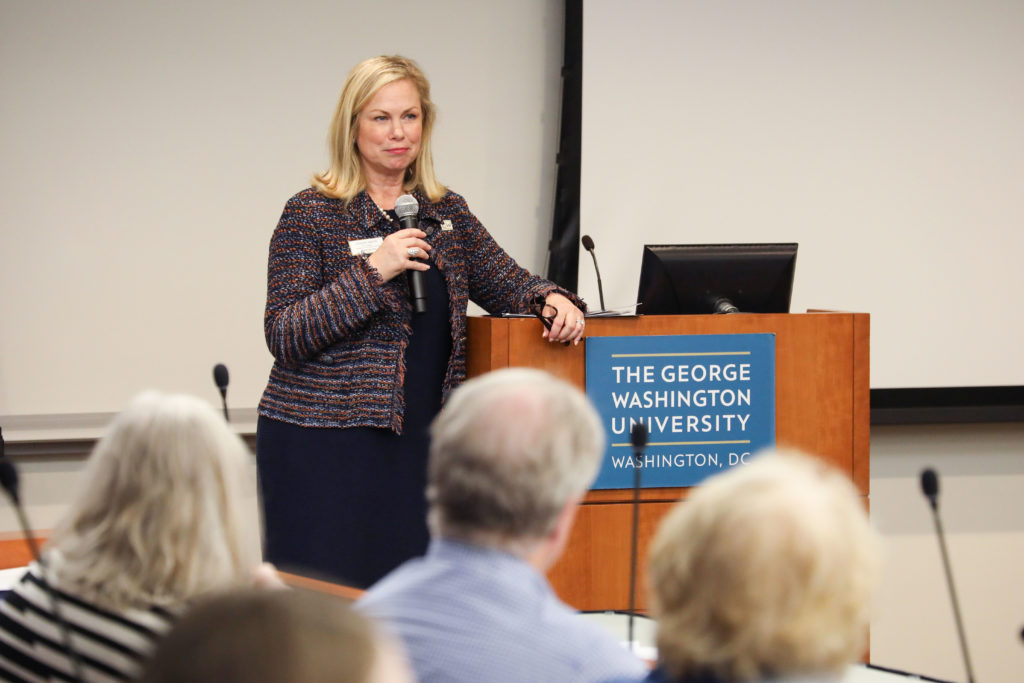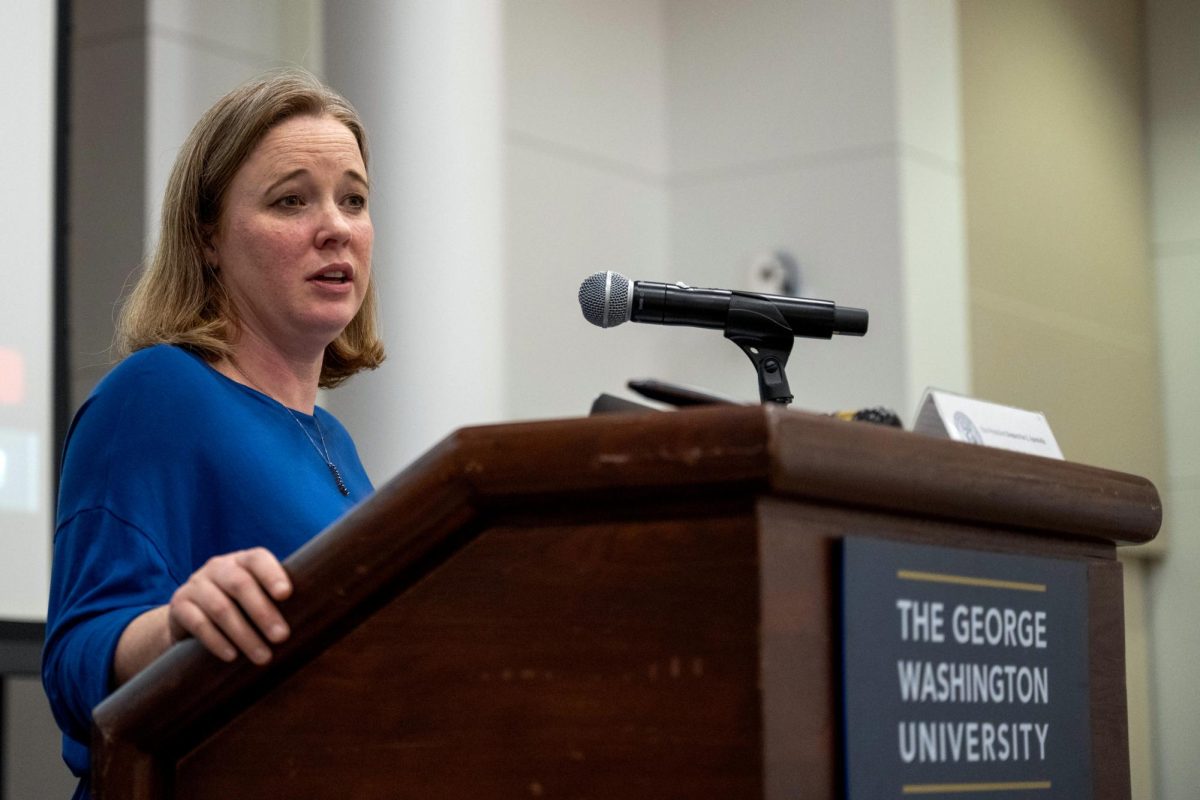Family donations to GW during the current fiscal year increased by 70 percent compared to last fiscal year, but totals have dropped by more than $12 million since fiscal year 2019 – the last fiscal year that wrapped up before the pandemic began.
Donna Arbide, the vice president for development and alumni relations, said GW community members’ families donated $3.6 million to the University in FY 2021, a sharp decline from the $15.7 million donated in FY 2019, which marked a seven-year high at the time. Experts said the drop in donations could be the result of limited in-person events during the COVID-19 pandemic and ongoing leadership transitions like interim University President Mark Wrighton’s arrival and Chris Bracey’s promotion from interim to full provost.
Arbide said families have donated $2.1 million so far during FY 2022, which started last July – a 70 percent increase compared to the same time in FY 2021. She said GW’s bicentennial celebrations and the joint Commencement for the classes of 2020 and 2021 this fall gave the University a “strong” start in raising funds during the current fiscal year.
“As we continue to navigate through the pandemic and return to some semblance of normal, our GW family philanthropy team is actively connecting with our GW families through virtual and in-person meetings and events once again,” Arbide said in an email.
The University’s fiscal years stretch from the start of July through the end of June of the following year.

Nicholas Anastacio | Graphics Editor
Officials said in the fall that they planned to delay the start of GW’s next major fundraising campaign until the University establishes a new strategic plan, and they instead started a “focused initiative” to increase the financial aid budget for Pell-eligible students through scholarships and fellowships.
Fundraising totals also stabilized in 2021, slightly increasing to $105 million after a recent peak in 2019. Officials declined to publicly release family donation data in FY 2020.
Arbide said the time of families’ donations to GW can vary during their child’s education, with some donating early during a student’s time at the University and others giving closer to their Commencement.
“Many families adjusted their timelines for philanthropy due to the pandemic, and we are continuing to reach out to them as we do with all members of our community,” she said.
Arbide also declined to say what percentage of GW’s recent total donations came from families and how much money officials hope to raise in family donations during FY 2022.
Experts in higher education said the lack of in-person events during the pandemic and the University’s shift in leadership could be responsible for the decrease in donations given COVID-19-related gathering restrictions.
Timothy Winkler, the principal and CEO of the private fundraising firm Winkler Group, said parents decide whether to donate to their child’s university based on factors like their level of satisfaction with its administration, the school’s reputation and their personal philanthropic priorities.
He said recent controversies at GW could have contributed to the drop in family donations, including a white history professor’s resignation after falsely claiming Black heritage, mold outbreaks across several residence halls and the GW community’s demands for former University President Thomas LeBlanc to resign, many of which occurred during or directly before FY 2021.
“Any one of those instances by themselves could be enough to negatively impact giving,” Winkler said. “Certainly all three happening in the same year could negatively impact giving.”
He said parents may have decided to prioritize donations to charity organizations that support individuals affected on the front lines of the COVID-19 pandemic like healthcare workers instead of universities.
“Ironically, with COVID, we saw giving go up across the philanthropic sector as a whole, but not every organization experienced a gain,” Winkler said. “So a lot of people were drawn to more community-based projects like food banks and homeless shelters and soup kitchens – things that were impacting people on the ground.”
Winkler said GW’s cost of attendance increases the difficulty of finding parents willing to donate on top of paying for their high tuition bills. He said parents who are alumni of the University are more likely to donate than parents who are not.
Officials announced last week that GW’s tuition would increase by nearly 4 percent, with the cost of attendance surpassing a total of more than $80,000 for the first time during the upcoming academic year.
Arbide said officials place alumni parents of current students in a separate donation category from other families of current students.
Winkler said the University still has a chance to increase its family donations for the current fiscal year with additional outreach to donors to convince them to prioritize higher education philanthropy.
“When you’re potentially competing against community-based organizations that seem to be more front-line during COVID, I think it’s important for the college to get its message out that ‘Hey, yeah those food banks and those shelters are providing a valuably needed service, but part of our investment and our students today are going to make sure we don’t go through this again,’” Winkler said.
Scott Mory, the vice president for university advancement at Carnegie Mellon University and a GW alumnus, said officials may see an increase in donations as in-person alumni events resume on campus because alumni and families had fewer opportunities to interact with the University during the pandemic.
“For the better part of the pandemic, most interaction was limited to the University talking about how it’s managing the pandemic,” Mory said. “That doesn’t necessarily set the stage for people to feel like they want to give.”
He said recent changes in GW leadership could have also impacted the drop in family giving.
“People want to feel confident where they’re giving,” Mory said.








